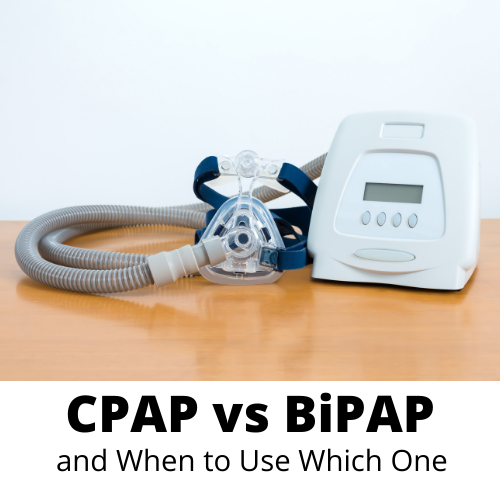Positive airway pressure (PAP) is one of the most common treatments for sleep apnea. Sleep apnea is a breathing disorder that affects 3 to 7% of the population. Positive airway pressure is a way to offset the breathing difficulties that these patients have throughout the night. There are two types of machines that can assist with sleep apnea treatments. One is called a CPAP and the other is called a BiPAP. We are going to talk about the difference between these two and which one to use in which situations.
What is sleep apnea?
Sleep apnea is a breathing disorder in which the muscles in the back of the throat relax and close. This gives air less space to come in and out which can cause individuals to temporarily stop breathing several times throughout the night. After a short cessation of breathing, they will wake up to start breathing again. Individuals with sleep apnea don't remember waking up or having moments of breathing cessation, but the next morning they are normally very tired and unsure why.
It can also be disconcerting for sleep mates who hear their partners stop breathing several times throughout the night. There are several risk factors for developing sleep apnea including smoking, obesity, large neck size, and being male. If you have sleep apnea then it is important that it be diagnosed using a polysomnography and working with a sleep doctor in order to get the help that you need.
Sleep apnea can lead to several other health issues including sleep deprivation, weight gain, etc., once your doctor diagnoses you with sleep apnea they will provide you a breathing machine. The most common is a CPAP, but they may also prescribe a BiPAP.
What is the difference between CPAP versus BiPAP?
Both of these machines use positive airway pressure. CPAP stands for continuous positive airway pressure and BiPAP stands for bilevel positive airway pressure. Positive airway pressure uses compressed air to open and support the airway during sleep. So when the muscles in the back of your throat relax, positive airway pressure helps to keep them open for better airflow.
A portable machine generates pressured air and is given to each user through a mask in a series of hoses and other accessories that they wear at night. Both of these therapies work in similar ways however they each have pros and cons that should be considered for each individual. Switching pop treatments should always be at the discretion of your healthcare
team.
CPAP machines have an adjustable pressure setting that delivers between 4 to 20 centimeters H2O (a measure of air pressure that stands for centimeters of water pressure) regardless of whether the user is inhaling or exhaling. The BiPAP is different because it has 2 pressure settings and inhalation airway pressure and an exhalation positive airway pressure that allows for lower pressure during exhalation. Depending on the machine settings the switch between both of these settings may be either automatic or times based on the user's breathing patterns. It is typical for BiPAP machines to have a typical pressure between 4 to 25 centimeters H2O.
When to use which therapy?
It is important before starting any therapy to work with your doctor so they prescribe you the right machine. CPAP is normally recommended for obstructive sleep apnea which is the more common disorder. Sleep specialists are unlikely to prescribe a BiPAP for somebody with OSA unless they simply could not tolerate the CPAP.
BiPAP is primarily used to treat central sleep apnea as well as heart lung and neuro disorders that require structured airway support during sleep. Central sleep apnea happens when there's a problem in the brain that can impact breathing patterns so it is not as automatic as it's supposed to be. BiPAPs are also used for those who have COPD who may need a little extra support and moving air in and out of the lungs while sleeping.
If you need any extra support or information about sleeping, then please feel free to reach out to our center or take the free online sleep test below.
[Sources]:
https://www.sleepfoundation.org/cpap/cpap-vs-bipap


